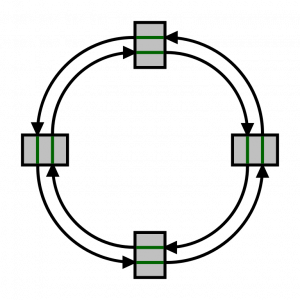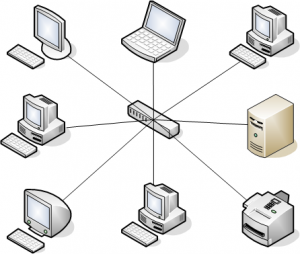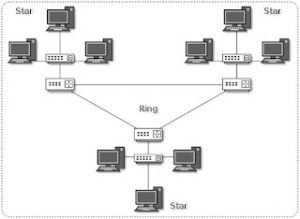This article seeks to serve as a thorough introduction to network topologies. Understanding the attacks and defenses requires understanding networking technologies, which is beneficial and essential. Network topologies serve as a representation of the network’s physical structure and serve as the framework for our entire system. The wiring and cables that link devices are intimately related to the physical layout of a network. We’ll discuss a number of typical layouts, including the bus, ring, star, mesh, and hybrid topologies. Today, we’ll talk about various network topologies. So Let’s Get Started.
Introduction
Below are the different types of Network Topologies. We will briefly discuss about these.
Bus – A bus network is a type of architecture for a network in which nodes are directly linked to a single, half-duplex, linear link known as a bus. The bus serves as the connection point for all cables and devices. The drawback of its simplicity is its vulnerability; if the bus backbone is broken, all connectivity is lost.

Ring – Each node in a ring network connects to exactly two other nodes, creating a single continuous path for signals to travel through each node. If one ring fails, some ring layouts use a concentric circle design to provide redundancy.

Star – Star topology, often known as a star network, is one of the most typical network configurations. Every node in this setup is connected to a hub, switch, or computer that serves as the hub of the network. The main network device serves as a server, and the other network nodes function as clients. The disadvantage is that the network will collapse if the hub or switch connecting everything fails.

Mesh – A mesh network is a local network topology where the infrastructure nodes collaborate with one another to efficiently route data from/to clients by connecting directly, dynamically, and non-hierarchically to as many other nodes as feasible. The largest network in the world, the Internet, which was built to sustain a nuclear assault, is composed of several mesh networks.

Hybrid – Network topologies that combine two or more different network topologies are known as hybrid topologies. Bus topology, mesh topology, ring topology, star topology, and tree topology are all mixed together in these topologies. It makes use of the biggest qualities of other layouts to its advantage.

OSI Model
Without the OSI model, no discussion of networks or explanation of network devices would be complete. With control being passed from one layer to the next, the Open Systems Interconnection (OSI) model defines a networking framework to implement protocols in layers. It essentially splits the design of a computer network into seven logical layers.
| Layer | Function | Example |
| Application | Services that are used with end-user Applications. | SMTP |
| Presentation | Formats the data so that it can be viewed by the user Encrypt and Decrypt. | JPG, GIF, HTTPS, SSL, TLS |
| Session | Establishes/ends connections between two hosts | NetBIOS, PPTP |
| Transport | Responsible for the Transport protocol and error handling | TCP, UDP |
| Network | Reads the IP Address from the packet | Routers, Layer 3 Switches |
| Data Link
| Reads the MAC Address from the Data Packet | Switches |
| Physical | Send data on the Physical wire | Hubs, NICS, Cable |
Some Well Known Ports
| Port Number | Service Name |
| 21 | FTP |
| 22 | SSH |
| 23 | Telnet |
| 25 | SMTP |
| 43 | WhoIs |
| 53 | DNS |
| 67 | DHCP Server |
| 68 | DHCP Client |
| 80 | HTTP |
| 115 | SFTP |
| 161 | SNMP |
| 389 | LDAP |
| 443 | HTTPS |
| 445 | SMB |
Conclusion
So, this was a thorough discussion about the network topologies, OSI Layer, and some of the common ports which are widely used over the internet. If you need any help on these topics, let us know in the comments below.




